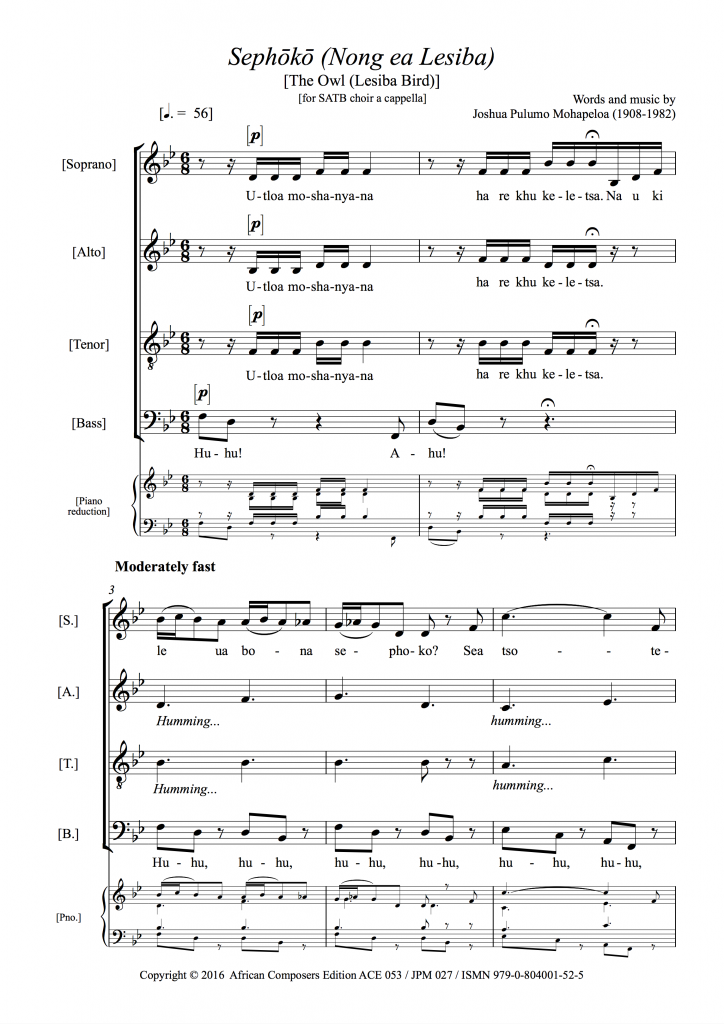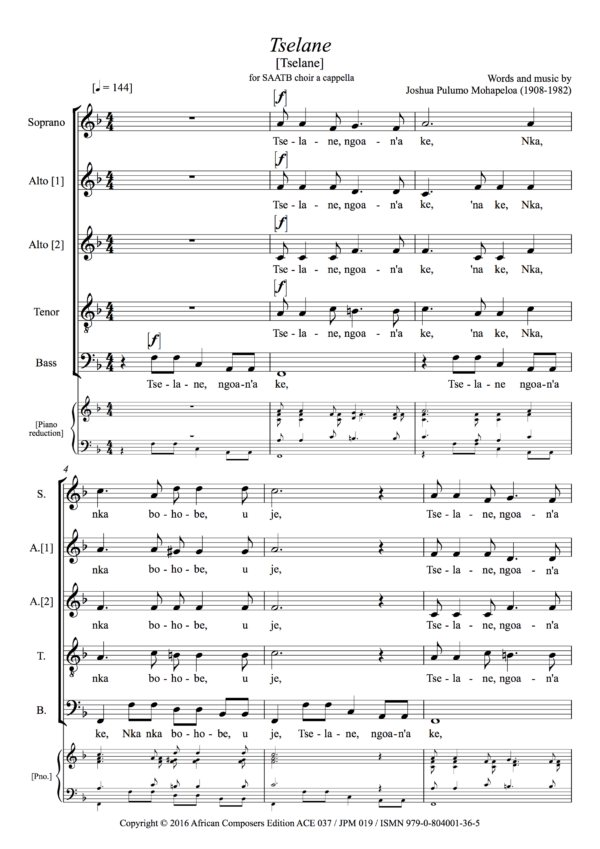Sephōkō (Nong ea Lesiba)

R39.00
Mohapeloa composed ‘Sephōkō’ in the early 1930s, publishing it in 1935 as song No. 27 in his first collection of 32 songs, Meloli le Lithallere tsa Afrika. It is one of several songs he wrote about birds and the central one of three bird songs in a row in Meloli I: ‘Linonyana’ (26) about the chattering of weaver birds precedes it, and ‘Motjoli, Nong Kholo’ (28), about the pied wagtail, follows. Mohapeloa’s love of birds and animals was fostered during a spell of illness in 1929-30 when he spent a period of time in his family’s home in Mohalinyane, observing nature, the weather, and the changing landscape. ‘Sephokō’ sounds like an onomatopoeic word (ō is a long ‘o’) suggesting the three-note call of the Spotted Eagle Owl, ‘hu-hu-hu’, the most common owl call in southern Africa. It has small ears that stick out like a mouse’s, as mentioned in the song. Mohapeloa added a layer of meaning with his subtitle, linking it to Lesotho’s national instrument, the lesiba bow.


